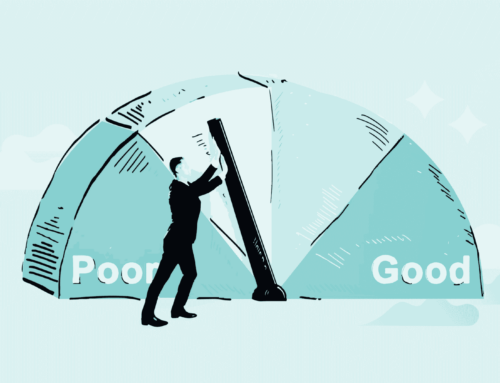A credit report is usually a document that lists your financial activity. Some of the details in such a report include your current debts, loans, payment history, and other financial information. Credit reports also contain information such as your residence, bankruptcy status, and even criminal records. Credit Reporting Agencies or CRAs often compile credit reports. There are different CRAs available, each having a unique set of information. Therefore, one CRA may not necessarily have all your financial or accounts information.
All CRAs play an essential role in ensuring that your information is accurate and helpful to whoever may need it. Worth noting is that credit reports often give a quick overview of your financial and social behaviour. Such information can be quite helpful in determining your creditworthiness. For instance, if you apply for a loan, your lender is likely to look at your credit report before determining if you can handle the responsibility that comes with it.
In some instances, your report can help such institutions determine the amount of money you can receive as a loan and the interest rates you are likely to pay. That is because the institutions will have access to previous financial activities and tradelines. More on tradelines later. You need to keep track of your credit report because it can affect how lenders and even landlords treat you. For example, a poor credit report may lead to the loss of important opportunities, including funding and even securing that house you have been dreaming of.
Going through your credit reports regularly ensures that you can detect any misinformation. For instance, if someone fraudulently opens an account using your details, that can hurt your status. By reporting such incidents, you ensure that the CRA corrects your information. Monitoring your report also allows you to pay off small debts that you may have forgotten about yet paint a negative image about you.
How Can You Check Your Credit Report?
You can check your credit reports by visiting AnnualCreditReport.com. You can access your credit reports for free from the three CRAs: Experian, Equifax, and TransUnion. The best part is that you can request all three reports simultaneously or at different times, depending on your preference.
If your request is denied, don’t hesitate to contact the AnnualCreditReport.com website for guidance. The CRA will then communicate the reasons for the rejection and advise what to do next.
How Does Credit Reporting Work?
Whenever you take a loan or open a credit account, your creditors and lenders send a report to credit bureaus. Lenders and creditors keep updating your information, and as a result, the credit bureaus also have access to the data. Some lenders or creditors report to one or two of the bureaus, while others may report to all of them. It all depends on the type of financial facility you have access to and the laws in place. Financial institutions, together with other specific entities, may obtain your credit report directly from the bureaus. This is allowed by law to help them make informed decisions when extending facilities such as loans or credit.
If you’re like the many other MyMarble Community Members who are actively seeking for ways to improve your credit score, you may be wondering how often your credit score is updated. It’s important to keep track of your credit score to ensure you’re making progress. So how often is your credit score updated?
Generally, your credit score is updated every 30 days. If you have a MyMarble Subscription, you will be able to check your credit score for free on the dashboard. In addition, if you’re a MyMarble Premium member, you will be able to check your TransUnion credit report too. Your credit score is calculated using the information on your credit report. That’s why checking both your credit score and credit report every 30 days can provide you with insight of your progress.
What Is a Trade Line?
A trade line is any kind of credit activity offered to a borrower and reported to the CRA. The tradeline often captures all the activities related to a particular credit account. Some examples of tradelines include credit cards, mortgages, personal loans, and auto loans.
It is worth pointing out that a tradeline can only be established when a borrower’s application for credit has been approved. Trade lines often include:
- The creditor’s account name.
- A scrambled or truncated account number.
- Date of account opening.
- Payment history.
- The particular customer’s current balance.
One of the most important aspects of a trade line is that it shows customer behaviour with regard to the facility they have accessed. For instance, anyone going through your trade line is likely to know if you make payments on time, late, or not at all.
How Do Trade Lines Affect Your Credit Score?
When a CRA is requested to produce your credit score, it often relies on your tradelines to compile a report. As a result, good trade lines are likely to generate a good report, while trade lines that feature issues such as late payment and failure to meet debt obligations are likely to generate a negative score.
CRAs utilize a credit score algorithm to generate a three-digit credit score to offer an accurate result. Understanding what exactly affects your score can be vital in ensuring a better credit score moving forward.
Your payment history has an effect of approximately 35 percent. That means late payments and failure to pay may affect your scores by that many percentage points.
The amount of money you owe others in terms of loans or credit has about a 30 percent effect on your score. However, if you meet your repayment obligations as agreed, the impact is positive.
The length of your credit history can have a 15 percentage point impact, while new credit has a 10 percentage point effect. Finally, your credit mix also has a 10 percentage point effect on your overall credit score.
You can work your way out of a bad credit score by considering the factors noted above. First, ensure that you have a relatively good payment track record. Secondly, ensure that you offset any debts you owe to others and then work your way through the other factors.
Both negative and positive credit lines are deleted or removed from reports after seven years, thanks to the FCRA act. That ensures that consumer credit reports and scores are based on the most recent and relevant financial information.
Removing a tradeline can have a positive impact on your overall score. However, it can negatively affect certain cases by reducing your average credit length.
One of the reasons you might want to have a tradeline removed is in the case of fraud. There is no need to have a trade line that negatively impacts your score, yet the issue is not your fault. You may also request removal if you close a particular credit account.
Get Financial Help from Marble Financial Inc.
Whether you are thinking of improving your credit score or want to have a healthier financial future, the key is to have a partner that understands all things finances. Marble Financial has the expertise and passion for walking with you every step of the way. So instead of second-guessing your financial decisions, get in touch with us for timely, expert help. Sign up for a free account today!







Leave A Comment